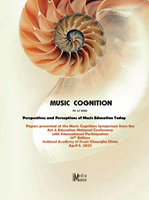Electromyography-based investigation of bilateral extensor digitorum communis, abductor digiti minimi, and abductor pollicis brevis of a pianist, after performing Scarlatti’s baroque sonata K.1
Electromyography-based investigation of bilateral extensor digitorum communis, abductor digiti minimi, and abductor pollicis brevis of a pianist, after performing Scarlatti’s baroque sonata K.1
Author(s): Iulia Toma, Mihai Popean, Claudia BorzaSubject(s): Music, Sociology of Art, Sociology of Education
Published by: MediaMusica
Keywords: EMG; piano; muscle; sonata; repertoire;
Summary/Abstract: The changes in muscular activity can increase the risk for musculoskeletal disorders and also have a negative impact on the performance task itself.1 Finger and arm techniques, of a professional pianist playing Scarlatti’s baroque sonata K.1 were studied using the electromyograph (EMG) which recorded muscular activity of bilateral extensor digitorum, abductor digiti minimi and abductor pollicis brevis. Compared results of finger and arm technique reveal lower amplitude potentials in all of the muscles investigated, except in the left extensor muscle where amplitude increased. Also, the frequency of the potentials decreased in all of the muscles investigated, except for the left abductor pollicis brevis where such potentials remain constant. Such difference in muscle potentials may lead to muscle-joint disorders if long-term activity is observed. The aim of this investigation is to increase awareness of the benefit of applying a complex mix of pianistic techniques rather than a single playing technique in piano education.
Journal: Cogniție Muzicală
- Issue Year: I/2022
- Issue No: 1
- Page Range: 66-79
- Page Count: 14
- Language: English

